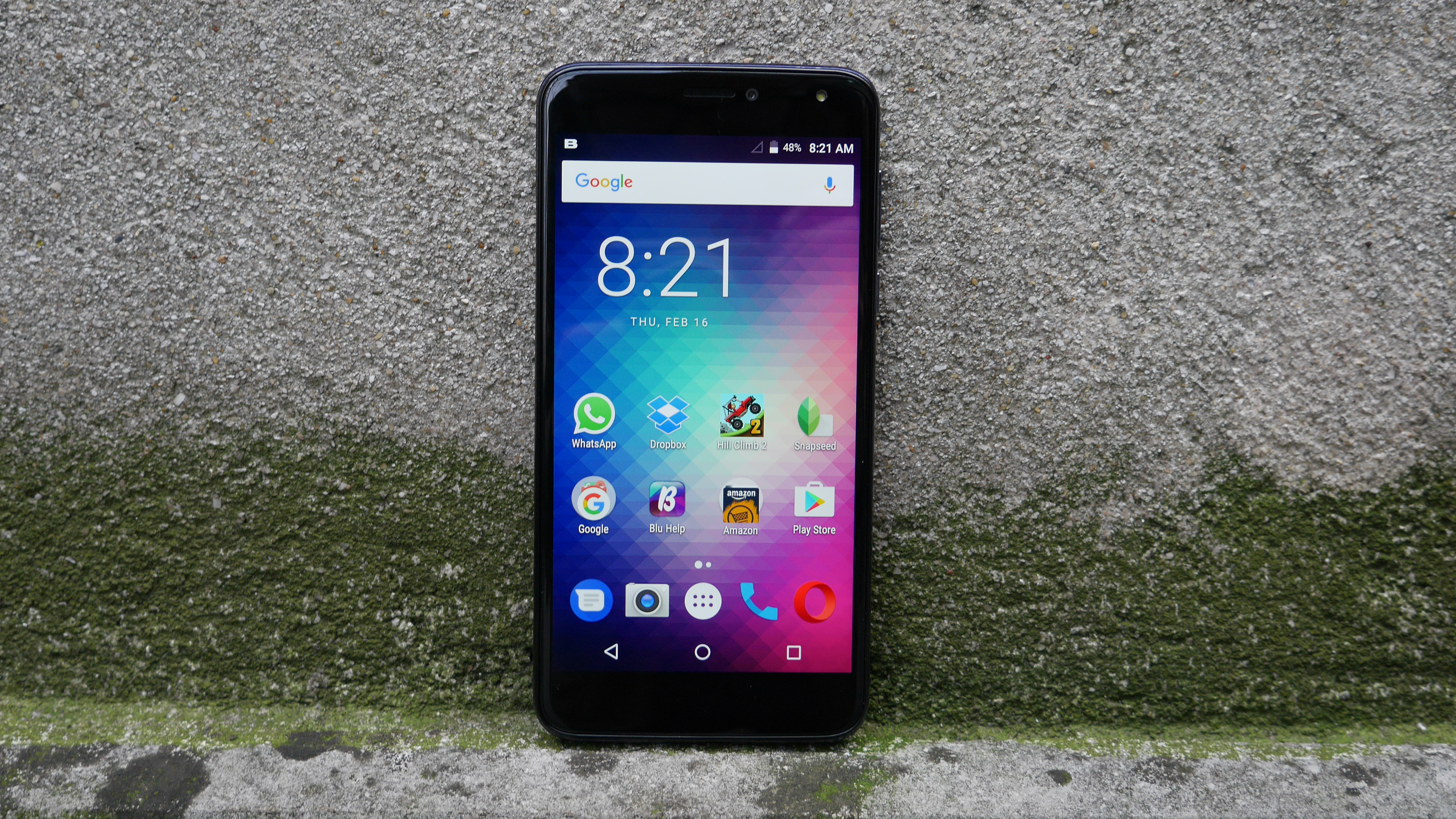Why you can trust TechRadar
Interface and reliability
- Android 6.0 Marshmallow
- Very light Blu skin
- Android Nougat update will drop eventually
Android is boss when it comes to affordable phones, and Google’s mobile OS takes the helm once again here.
The company’s latest version - Android 7.0 Nougat - is nowhere to be seen, although Blu has confirmed to TechRadar that an update will be offered at some point in the future.
Instead, Android 6.0 Marshmallow is the software of choice here. Although not quite stock Android, Blu’s software skin is so light, you’ve essentially got the core Android experience, and that’s key.

Many budget phones cram their software with so much margin-boosting bloatware that the phones become fat, slow, unwieldy offerings. Fortunately, that’s not the case here. Yes, there are a couple of unwanted add-ons, but it’s not overdone.
Those pre-installed apps are a couple of Amazon shopping options and the Opera browser. And even these can be killed off if you want. Beneath that, it’s mostly core Android offerings, with Google’s stock music player lining up alongside the bog-standard gallery, dialler and Chrome apps.
All this combines to create a familiar, welcoming interface. The Blu Life Max is a phone that’s got plenty of customization options and enough user-friendly smarts to appease first time smartphone owners and hardened handset enthusiasts alike.
It’s cleaner than the likes of Huawei’s EMUI skin and even Samsung’s TouchWiz overlay, with the traditional app drawer giving you a central location to access all your apps.
Sign up for breaking news, reviews, opinion, top tech deals, and more.
Even the Amazon add-ons have their benefits, bringing free app and gaming downloads to the mix.
Movies, music and gaming
- 5.5-inch 720p display doesn’t make for engaging viewing
- Power problems make gaming a sluggish affair
- Audio abilities uninspired
If you’re after a phone that’ll replace your laptop or iPad as your primary on-the move Netflix option, you’re out of luck. Given its price, the Blu Life Max’s entertainment abilities are impressive, but in the grand scheme of things it’s still sub-par.

When gaming or watching video content, it’s not the phone’s low resolution that’s the primary problem, more its lack of brightness. Yes, there is a notable lack of depth and definition, but not being able to crank the brightness only compounds the issues.
Video content with lots of areas of shadow and darkness becomes a murky mess and games fail to add that engaging shine you’re really looking for.
It’s not just the screen that hampers the overall gaming options though, the phone’s chipset isn’t really up to the task either. Playing bigger, more demanding games such as Asphalt 8: Airborne, things just aren’t fluid enough.
Instead, your gaming sessions will be punctuated with stutters and stalls. It’s not unplayable, but neither is it the most enjoyable, relaxing of experiences either.

On to audio, and things don’t get much better. Play music through the phone’s integrated speaker, and it quickly becomes clear that it’s not up to the task, especially when you start pushing the volume up, with things quickly becoming tinny and distorted.
Although we’ve picked apart a number of issues with the Blu Life Max’s entertainment skills, it’s important to remember this is a sub-$110/£100 phone, and little within that price range comes close to its abilities.
Benchmarks and performance
- MediaTek MT6737 paired with 2GB of RAM
- 1.3GHz quad-core chip fails to impress with real world use
- Geekbench scores are equally uninspiring
The Blu Life Max isn’t the fastest phone going, far from it. Whatever you ask the phone to do, you can feel it thinking before springing into action. It’s not just that it’s slow, but every app launch or command request is followed by a notable pause.
We’re not just talking about seriously system demanding tasks such as launching a sizeable game or quickly skipping between different apps, either. Things as simple as pressing ‘reply’ on an email are met with a stutter.
Even for the price, you’d hope for something a little smoother and more refined.

The phone’s MediaTek MT6737’s real world issues are brought into focus when benchmarked, too. Running the Geekbench 4 tests, the Blu Life Max recorded an average score of 1490. This is seriously low.
To put it into context, other affordable phones top the 3000 mark, with the Moto G4 Plus and Honor 6X recording scores of 3047 and 3275 respectively. This performance ultimately hampers what the phone is capable of and its overall user experience.
Current page: What's it like to use?
Prev Page Introduction, key features and design Next Page Battery life and camera